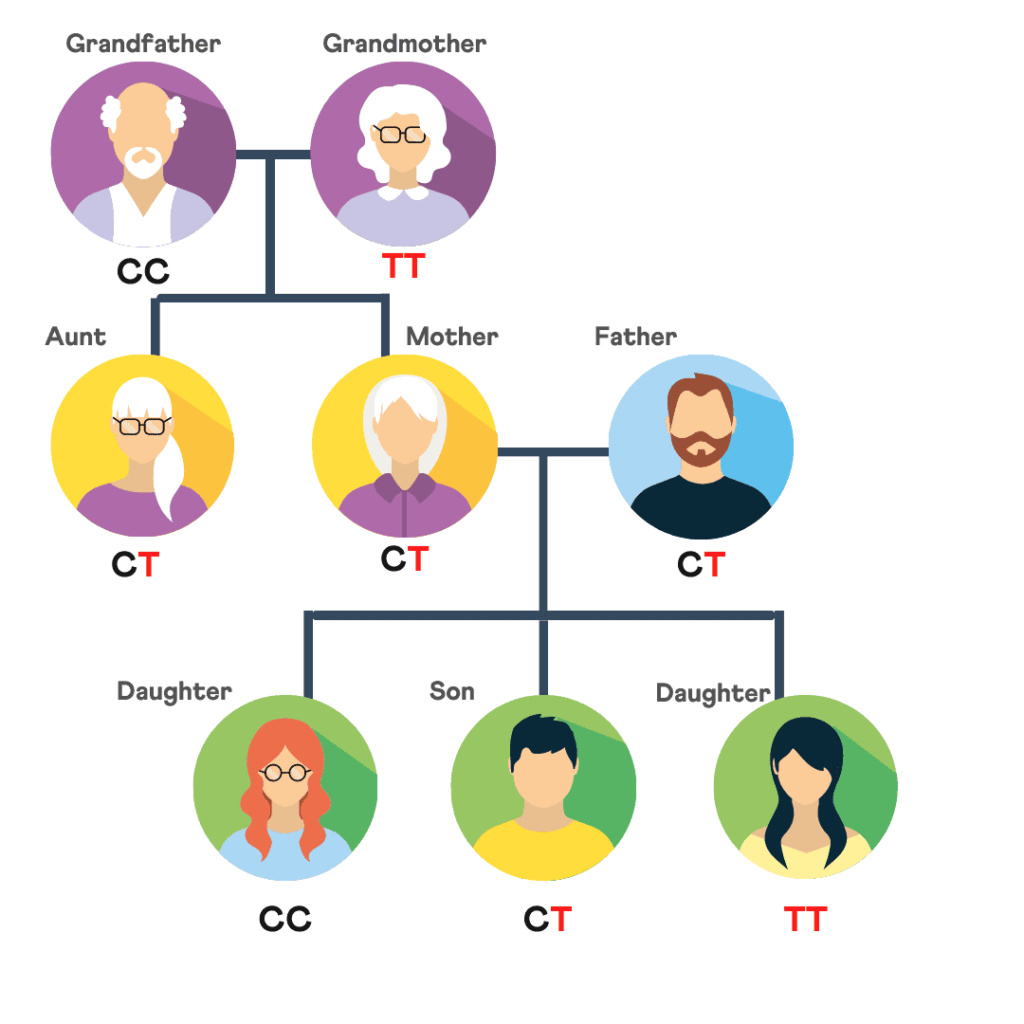WATCH: How to interpret your MTHFR report
What is MTHFR?
MTHFR stands for methylenetetrahydrofolate reductase and is produced by the MTHFR gene.
MTHFR enzyme performs the function of adding chemical (methyl) groups to folic acid (Vitamin B9) in order for the body to utilize it efficiently.
This process is also necessary for the process that converts the amino acid homocysteine to another amino acid, methionine.

With your 23andMe raw data, you can learn a lot about your MTHFR gene.
But, why should you learn about your MTHFR gene status?
All of us have the MTHFR gene. But the type of MTHFR gene differs from person to person.
To explain this better, let’s take the example of blood groups. All of us have red blood. But you may have O+ve blood type, while the other person may be A-ve - and these different blood groups have different health implications.
Like how O+ve and A+ve are the most common blood types, the MTHFR gene also has 2 common variants (type): C677T and A1298C, the former being more common than the latter.
About 40% of the American population have the C677T type, which has been associated with up to 80% reduction in the enzyme’s efficiency
This reduction has been found to lead to increased levels of homocysteine, which in turn increases the risk of venous thrombosis and heart diseases.
Once you learn about the type of MTHFR gene you carry, the effects of it can be made better by simple fixes such as dietary changes and folic acid supplements.
What is an MTHFR test?
An MTHFR gene test examines variations in the MTHFR gene.
This test does not need a medical prescription. It can be performed in a major genetic diagnostic lab such as Quest or LabCorp.
More readily, the 23andMe MTHFR status can be learned from your 23andMe raw data. Anyone with 23andMe raw data can upload their DNA raw data to xcode.life to learn about their 23andMe MTHFR status. So the MTHFR “test” does not necessarily have to be a test but can be as simple as uploading your 23andMe raw data (if you already have it) and downloading your results.
In an MTHFR gene test, the DNA is retrieved from a saliva sample. The sequence of your DNA is then analyzed for the most well-studied and verified types of MTHFR gene known to have an effect on your body functions and disease mentioned above.
Who tests for MTHFR mutations?
There are many service providers and online tools that help you find out about your 23andMe MTHFR status. Some of them are listed below:
- Xcode Life: Almost 40 SNPs related to methylation and MTHFR are reported as part of the Xcode life MTHFR and Methylation report. You can upload raw data from most major ancestry companies such as 23andme, Ancestry DNA, Family Tree DNA (FTDNA), and others (view the complete list here) and learn about your 23andme MTHFR status. The reports come with a detailed set of recommendations that guide you through the dietary changes necessary to mitigate the enzyme deficiency.
- Genetic Genie is a tool that accepts raw data only from 23andMe
- Genetic life hacks blog: It is not a tool but has a lot of information dedicated to methylation and the MTHFR gene that you can use as a reference if you have your raw data and a little knowledge about how SNPs work. However, if you do not have such a background do not attempt to interpret the information all by yourself.
- Livewello
- Dr. Amy Yasko’s Nutrigenomic testing
How to check my DNA raw data for MTHFR status
The MTHFR nucleotide at position 677 in the gene has two possibilities: C (cytosine) or T (Thymine). C at position 677 is the normal version - Let us call this the C type gene.
The C type gene produces an enzyme that is stable in heat. Thus, people who have this type have normal enzymatic activity.
The T type gene (T at position 677), on the other hand produces an enzyme that is unstable in heat.
People who have the T type gene have lower enzymatic activity as this enzyme is readily destroyed by heat.
Individuals with two copies of the C type gene (CC) are the majority in the population.
Those with two copies of the T type gene (TT) have lower enzyme activity than CC or CT (one copy of the C type and one copy of the T type genes) individuals.

Low dietary intake of the vitamin folic acid can also cause mild hyperhomocysteinemia.
Essentially, your 23andMe MTHFR analysis provider will be able to tell you whether your MTHFR enzyme efficiency is normal, reduced, or severely reduced and recommend supplements or diets accordingly.
With simple dietary modifications, you will be able to mitigate the enzyme deficiency.

If you already have your DNA raw data from an ancestry test you may have done, you can easily find out your 23andMe MTHFR status from your DNA raw data. Otherwise, you may consider an ancestry test for $99 or less, so that you can get your genetic raw data for further analysis. Once you have your raw data, you can upload it to xcode.life for your 23andMe MTHFR status report.




